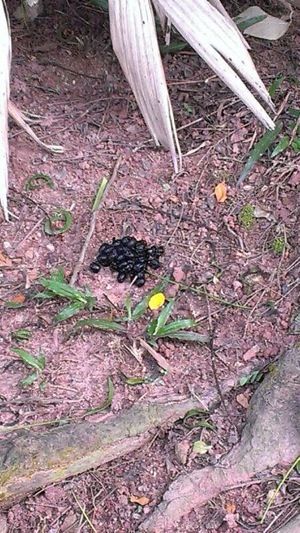It was the start of the recess week on the 25th February 2013, and this would usually be a sleepy and uneventful break during the university semester.
However, this was not an ordinary start to the break as I woke up with a Facebook status tag from one of our graduate student, Anuj Jain on an encounter with a common palm civet in University Town, right in our own campus. During the encounter, Anuj was with some of his friends. He mentioned that after the civet noticed them, it quickly ran into the pepper plant undergrowth at Town Green and then climbed up onto the Angsana tree for a few minutes.
Fortunately for us, Avinash Bahirvani, one of Anuj’s friend managed to capture some photographs of this elusive, nocturnal animal within NUS.

The civet is different from a domestic cat. It has a very long tail and a masked facial pattern similar to that of a bandit.
Every year, there are several sightings of common palm civets at different localities around campus. However, most of the time, we only know of their presence through the appearance of scats the next morning. Civets mainly move around at night and often shy away from humans, hence, they are rarely spotted.

A neat pile of civet scat consisting mainly of fishtail palm seeds along Kent Ridge Road (Photo by Koh Choon Yen)
The common palm civet is the last wild native carnivore that has managed to survive urbanisation and can co-exist with humans in urban areas. Therefore, it is really great to see the photographs of this individual in campus. We definitely hope to see them around more often. Now that you know what a civet looks like, if you spot them around your hall during your late night activity, do share this news with us at this link.



